Breaking or breakdancing makes its way to the 2024 Paris Olympics for the very first time! You get to witness some of the best b-boys and b-girls from all around the world battle it out to grab the title of champion!
Like most other sports, you’re wondering what breaking is and what to expect at the Olympics, don’t worry, we’ve got you covered! On this page, we dive into everything you need to know about the dance form, its history, & what the competition holds in store.
A brief history of breaking & Hip Hop
To understand what breaking is, we first have to understand its roots. Breaking is one of the four main elements of hip hop, alongside MCing, DJing, and graffiti.
The origins of hip hop date back to the 1970s in the Bronx, New York. It was here that the legendary DJ Kool Herc (the Godfather of Hip Hop) pioneered a technique that involved looping the 'break' section of a song, which primarily featured rhythmic percussion and bass. During this ‘breakdown,’ the crowd at these bloc parties would start dancing in a circle, creating a style of dance that came to be known as breaking or breakdancing.
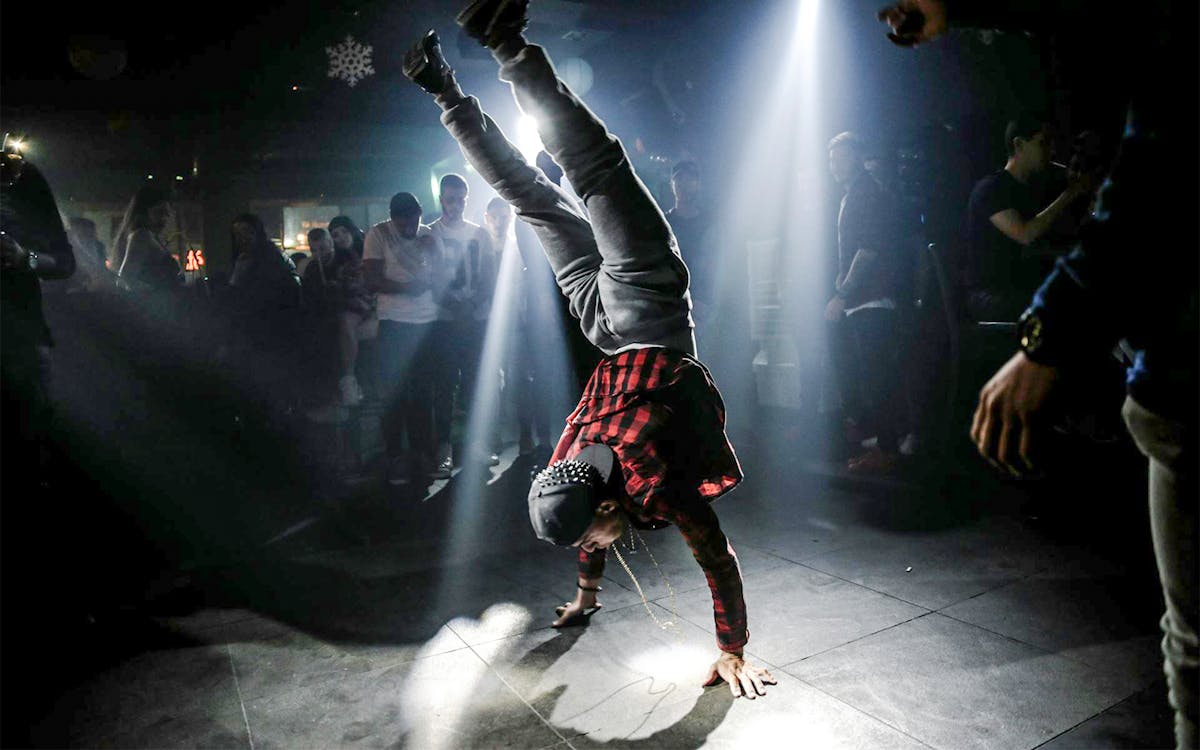
Drawing inspiration from martial arts, gymnastics, and the iconic moves of James Brown, a new dance style emerged, which remains the most prominent of the hip hop dance styles.
From its beginnings at underground parties and on the streets, breaking soon gained popularity and spread to many regions across the globe. Crews like Rock Steady Crew, the Dynamic Rockers, and the New York City Breakers, took this style to a whole new level by creating new moves, setting the foundation for future generations to come.
One of the earliest commercial debuts of the dance was in the 1983 movie Flashdance featuring Rock Steady Crew. In the 1990s, this dance style achieved global recognition and led to the establishment of international competitions. The first of these was Battle of the Year (BOTY), founded by Thomas Hergenröther in Germany in 1990. This was followed by IBE, the first edition of which took place in the city of Rotterdam in 1998. In the 2000s, another prominent competition was held called Redbull BC One, which today remains one of the biggest international breaking competitions.
Today, breaking is everywhere - in music videos, in movies, in advertisements, on billboards, in clubs, in dance studios, and of course, the Olympics!
Elements of the dance
Breaking consists of four primary elements - Toprock, Downrock, Freezes, & Powermoves.
Toprock is everything a breaker does when they are standing. It’s essentially an introduction to what will follow once they hit the floor.
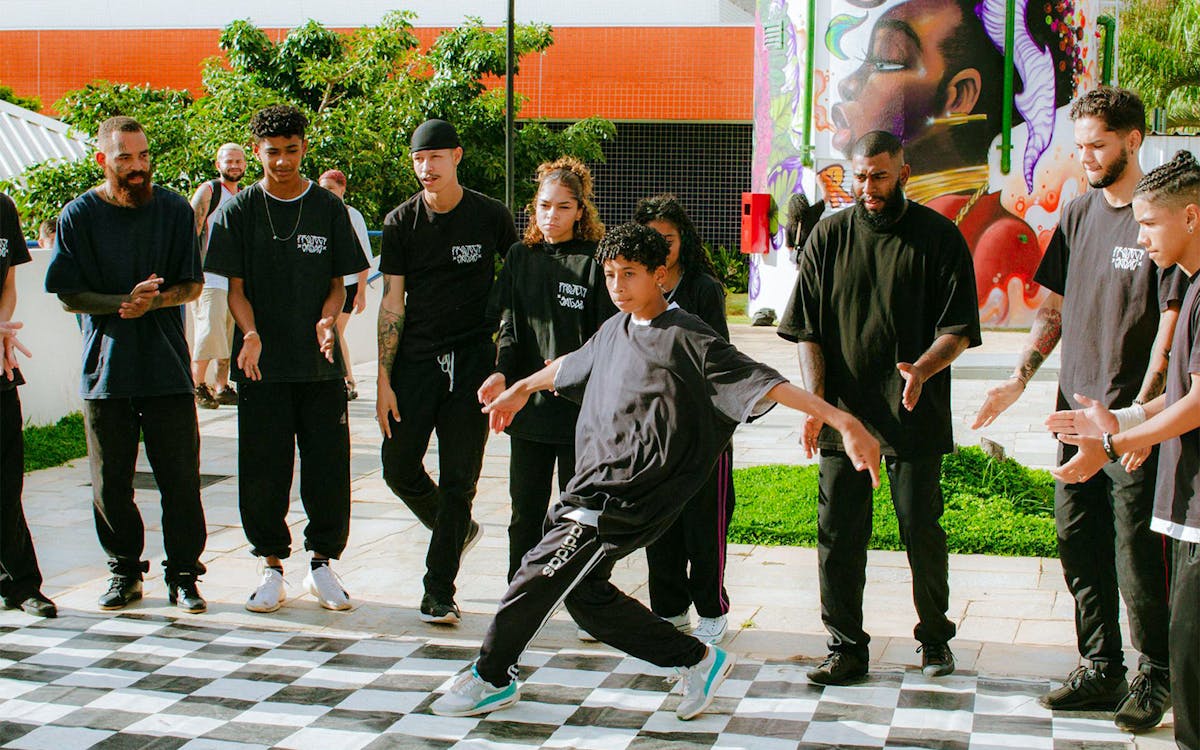
Downrock is when a breaker gets down on the floor and creates a series of movements with both hands and feet on the ground.

Freezes are poses that a dancer sticks when there’s a prominent sound or pause in the music, the most basic and popular one being the Baby Freeze.
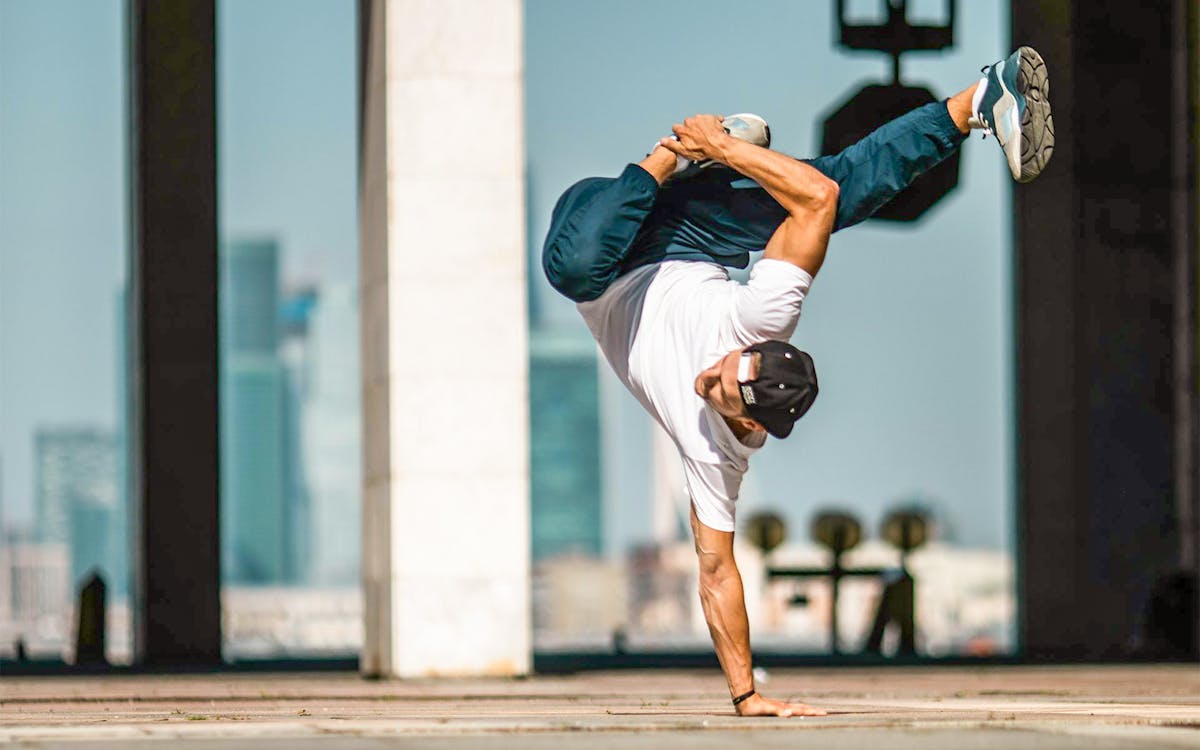
And finally, we have Powermoves, which form the most athletic part of the dance, where the whole body is usually rotating in a continuous motion, balancing on one or more parts of the body.
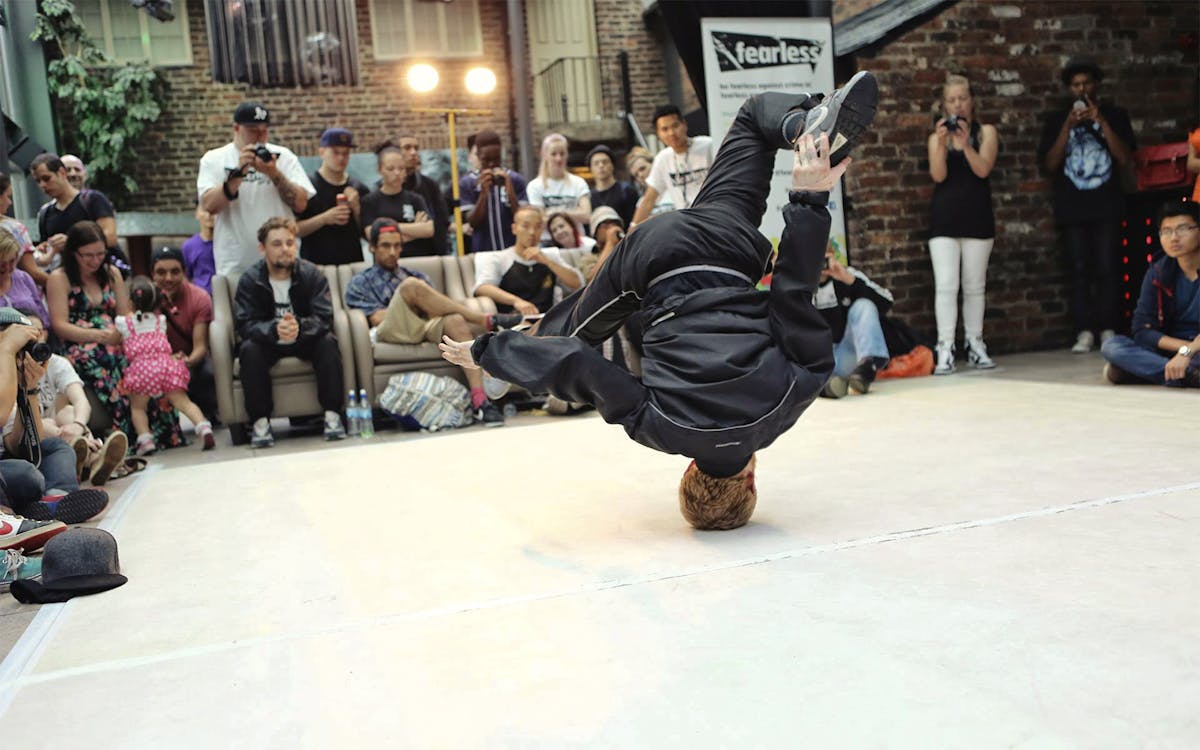
B-boys & B-girls: Another key term to understand is b-boy or b-girl. B-boy is short for Break-boy, and B-girl stands for Break-girl. Each dancer comes up with a unique name for themselves, like ‘B-boy Thesis’ or B-girl Logistix,’ or in some cases their birth name, like ‘B-boy Ronnie’ or ‘B-girl Kate.’
Cyphers & battles: Cyphers and battles are THE most important part of the culture of breaking. A cypher is when a group of dancers form a circle and take turns dancing in the center, while a battle is a face-off between two dancers or two crews.
The music: Breaking music or ‘breakbeats’ drew its earliest inspirations from funk, jazz, soul, disco, & Latin styles of music. The genre has evolved over the years but still retains its core sound, which primarily involves fast percussive beats.
During battles, breakers dance to whatever music the DJ plays in the moment. So the DJ plays a crucial role in giving the dancers the energy they need and challenging them to incorporate a bit of freestyle to showcase their musicality.
Understanding how battles work
It’s said that breaking was once a way for gang rivals to settle their disputes peacefully. Each dancer brings their best moves to the floor until one emerges victorious! You might have heard of the term ‘You got served!’ from the popular movie of the same name, which seems like an apt way to describe the feeling of winning a battle back in the day.
The concept of a ‘battle’ gained widespread popularity to the point that breaking battles have now reached the Olympics! Crazy right? This truly marks a massive milestone for the community.
Today, a breaking battle usually consists of a pre-qualifier where either through a showcase performance or a showcase battle, 16 dancers are selected. These 16 will then go through multiple rounds until the finals, where one takes the title.
In recent years, the judging system for these battles has evolved to become very technical, where judges look for aspects like originality, cleanliness, musicality, vocabulary, technique, and execution. Each dancer is scored for each round by a judging panel usually consisting of 3 to 5 judges or more.
In the Olympic breaking battles, a panel of nine judges will assess each dancer using five criteria: vocabulary, originality, musicality, technique, and execution. Each category will contribute 20% to the total score for each round. Although there usually isn’t a time limit for each round, at the Olympics, dancers will have 60 seconds to complete a throwdown. Dancers will also be penalized for any type of misbehavior during the battles.
Breaking - A dance or a sport?
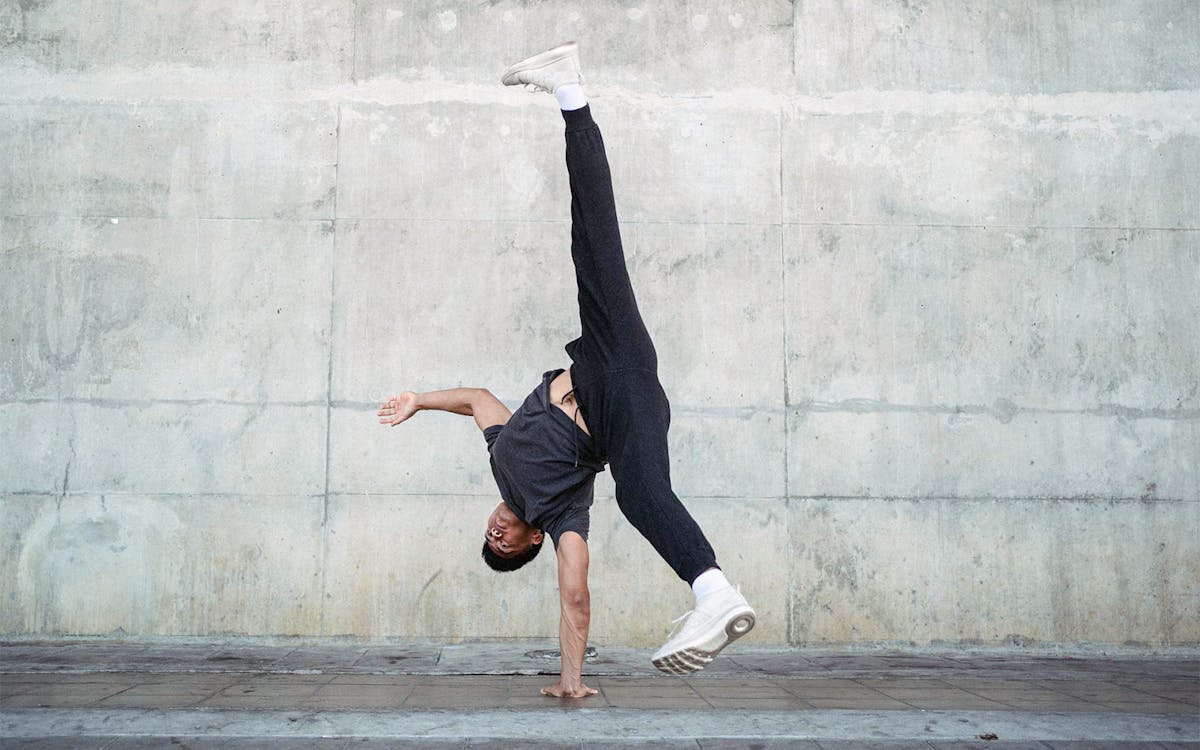
While breaking is considered a dance, there’s undeniably a lot of technicality and athleticism involved. Over the years, it has transformed into an extremely complex and physically demanding dance style, which is why it’s now considered a professional dance sport, similar to gymnastics for instance.
Here are a few other reasons why breaking is considered a sport:
- There’s a technical scoring system for battles.
- It is extremely competitive.
- Big-breaking competitions attract dancers from across the globe and are often televised.
- Many dancers who have won big titles are sponsored by brands like Redbull, Nike, Adidas, & more.
Breaking was first introduced at the Summer Youth Olympic Games in Buenos Aires in 2018. It was a huge success, leading to its inclusion as a new category in the 2024 Paris Olympics. This has helped solidify its status as a professional dance/sport.
Who’s competing?
There are some very strong competitors on the lineup but we have our eyes on a few who might take the title.
In the B-boy category, Redbull BC One champions such as Victor, Hongten, Amir, Shigekix, and Menno are prime contenders for the finals. However, bboys like Phil Wizard, Dany Dann, and Mighty Jimm also have a significant shot at making it to the top.
The B-girls are looking impressive as well! We’ve got former champions like Ami, Logistix, & India who just might grab the top spot, but dancers like Ayumi, Syssy, & Nicka are sure to put up a good fight.
With that being said, every dancer on this lineup has an equal chance and we’re eager to watch them battle it out!
Where and when will it take place?
Venue: Place de la Concorde | Get Directions
Battle schedule (GMT+2):
9th August:
B-Girls Round Robin & Pre-Qualifier Batlle (19:30)
B-Girls Quarterfinals (23:30)
10th August:
B-Girls Semifinals (00:15)
B-Girls Finals (00:45)
B-Boys Round Robin (19:30)
B-Boys Quarterfinals (23:30)
11th August:
B-Boys Semifinals (00:15)
B-Boys Finals (00:45)
How to watch the battles online: Every country has a few network providers who will be live streaming the competitions. Check which providers you have access to so you can enjoy the show from your home.
Things to do while you're in Paris
If this is your first visit to Paris and you’re looking for other things to do, here are some of the top attractions you should check out.






